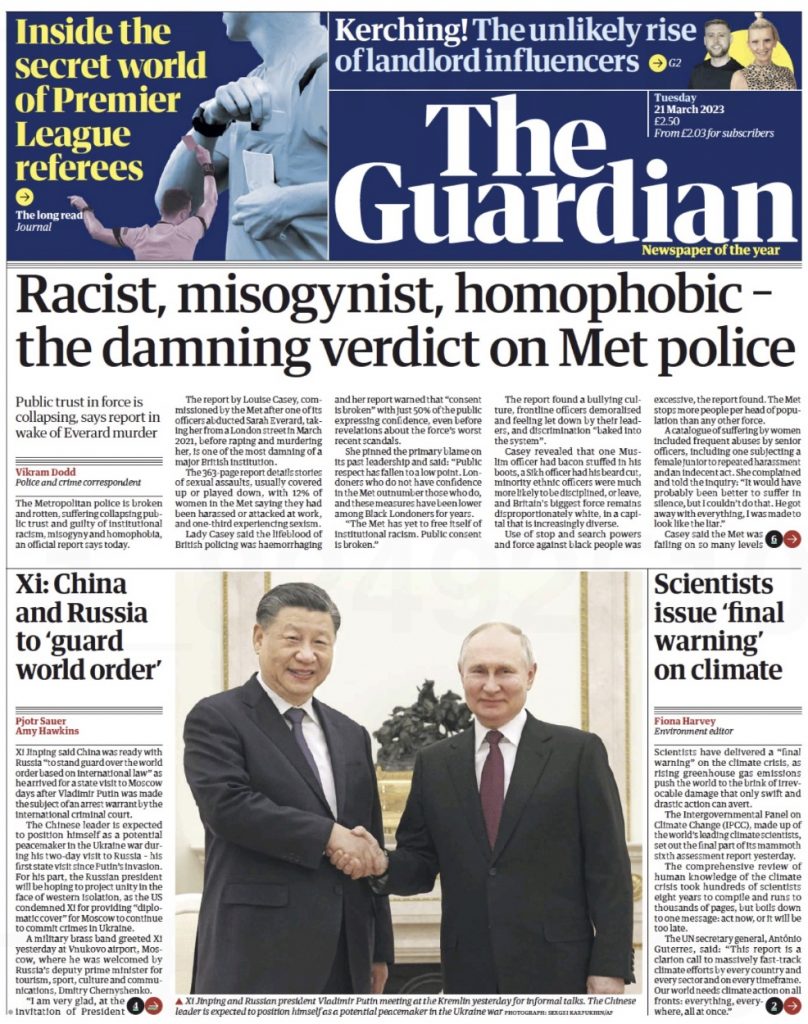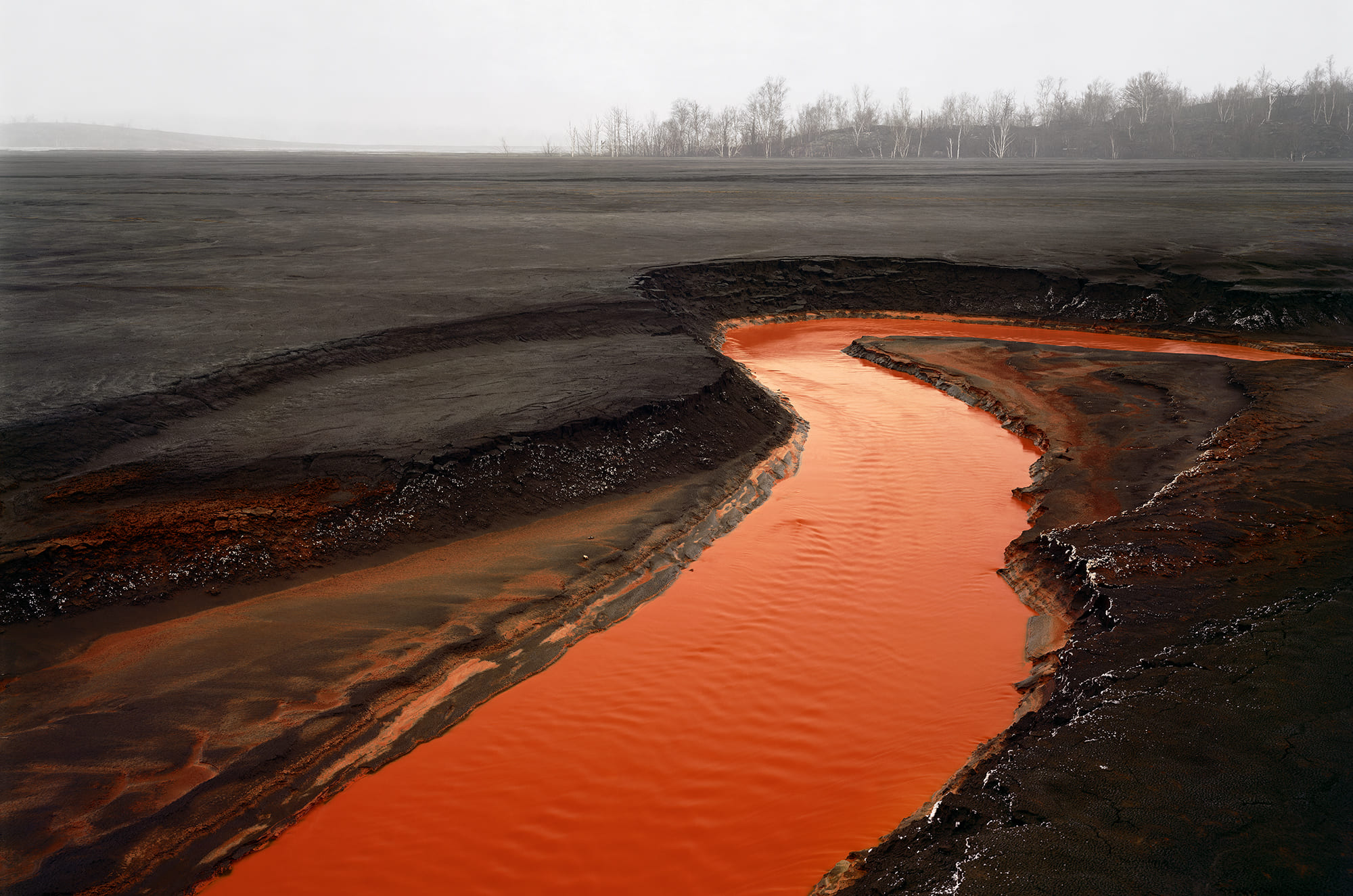This week the UN’s Intergovernmental Panel on Climate Change (IPCC) published its sixth assessment synthesis report (SYR) on monday March 20. In yet another stark reminder, the report brings together the latest and most up to date scientific evidence on climate change, outlining how global temperatures are “more likely than not” to climb to 1.5°C above pre-industrial levels and therefore putting us on course to exceed the target which parties set out in the Paris climate conference in 2015.
Although the SYR features no new science, it does bring together the central messages from all of the preceding research by IPCC authors and formulates a practical guide for governments and decision makers around the world that are seeking to implement climate positive change.
The SYR will prove vital for decision makers in the coming years as there are no new IPCC reports scheduled to be released before 2030, making it the go-to collection of scientific advice to governments for the coming decade.
During the announcement of the SYR, UN secretary-general António Guterres called for “climate action on all fronts” and portrayed the report as a blueprint for how governments can still act to mitigate against the damages inflicted by extreme weather patterns.
However, he also emphasized the report’s call for more urgent action by asking for countries to anticipate their net zero plans by a decade. “Leaders of developed countries must commit to reaching net zero as close as possible to 2040, the limit they should all aim to respect,” he said in a statement.
The call to anticipate net zero targets was also aimed at countries such as India and China who have announced net zero plans for beyond 2050, requesting that they also bring them forward by a decade.
Although the SYR is primarily meant for policymakers, it has also been received by media, scientists and activists across the globe who will have a key role to play in applying pressure on governments to make policy choices that are in line with the most up to date climate science.
This image from today's IPCC synthesis report is brutal. The existing policy trajectory represents a profound failure of our governments, and of our international political system. We need much more aggressive mitigation and much stronger international cooperation. pic.twitter.com/vQiSLzlI3g
— Jason Hickel (@jasonhickel) March 20, 2023
Top news reports
Around the globe countless media outlets have given the latest IPCC report top priority. From The Guardian’s detailed explainer on what the report is and why it matters to Harper’s discussion of how reporting on climate narratives has changed the SYR has proved instrumental in putting climate issues on the front pages.
In the English language some of the most read articles include: the Guardian’s “Scientists deliver ‘final warning’ on climate crisis: act now or it’s too late”, the Washington Post’s “World is on brink of catastrophic warming, U.N. climate change report says” and the BBC’s “Scientists release ‘survival guide’ to avert climate disaster”.
In general articles seem to focus on both the proximity of “dangerous climate thresholds” beyond which “people will not be able to adapt” as well as reporting U.N. Secretary General António Guterres’ claim that the SYR is a “how-to guide to defuse the climate time-bomb.” that would speed up global actions on climate.

One of the most common quotes seen throughout media coverage is that of IPCC Chair Hoesung Lee who said that, “This report offers hope, and it provides a warning […] The choices we make now and in the next few years will reverberate around the world for hundreds, even thousands, of years.”
The Washington Post in particular highlights the language used by the report which it claims is more assertive than ever before and features, “The phrase ‘high confidence’ […] 200 times in the 36-page summary chapter [and] Humanity’s responsibility for all of the warming of the global climate system is described as an unassailable ‘fact.’”
For the majority of newspapers the message is clearly that “failure to act now won’t only condemn humanity to a hotter planet ]…] It will also make it impossible for future generations to cope with their changed environment.”
Where major English language news sites are running the IPCC's climate report. Touted as a major news event. But largely not impressing news editors. pic.twitter.com/wIvWFrFN8R
— Karl Mathiesen (@KarlMathiesen) March 20, 2023
Yet not everyone chose to focus on what the SYR says. Karl Mathiessen, senior climate correspondent at Politico, writes about what wasn’t in the report. His opinion piece looks at the aspects of the report that have low levels of certainty and how this may influence our understanding of the future.
“Scientists still don’t have answers to many of the questions that will define how well the world copes with the worst of climate change,” writes Mathiessen who says these questions include our understanding of things like extremes, vulnerability, tipping points and the ability of our political institutions to manage and cope with the impending crisis.
Yet, it isn’t just English language media that chose to feature front page coverage of the SYR. Spanish daily newspaper El País opened on Monday with an article on how the window for change is rapidly closing whilst also providing a list of the changes that need to happen in the near future if policymakers are to keep us on course for the 1.5C goal.
Telám, the Argentine national news agency, also gave space to the SYR, albeit not on the front page, by highlighting how the report will be a key resource for stepping up ambition before the next conference of the parties (COP28) in Dubai.
Similarly French and German dailies Le Monde and Der Spiegel focus on the idea that “there is still a chance to limit global warming to 1.5°C compared to the pre-industrial period, provided that there is a united global effort” and how “what is in the report is scientifically established and no longer questioned,” although what decision makers will make of it is a whole other question according to Jochem Marotzke, director at the Max Planck Institute for Meteorology in Hamburg.
An issue that Der Spiegel and the Associated Press also highlight is how the SYR was being “held up by a battle between rich and developing countries over emissions targets and financial aid to vulnerable nations,” which saw the final text being agreed upon late on Sunday instead of the previously agreed upon Friday deadline: two days late.
Taiwan based media company Hi Net also chose to emphasize the issue of inequality quoting Aditi Mukherji, one of the report’s authors, who said that: “Climate justice is critical because those who emit the least carbon are bearing the brunt disproportionately.”
More social media than news
Discussion of the new report has not only featured across news based websites, with Leo Hickman’s Twitter feed giving an excellent breakdown on how different UK based newspapers are reporting on the topic, but also on social media and in particular on Twitter.
With almost a 1,000% increase in user activity around key climate hashtags compared to the previous week the SYR has created a stir among social media users. Christopher Trisos, one of the authors of the report, gives one of the most comprehensive step by step breakdown of what is contained in the report and how to interpret it.

Discussions have revolved around not only the content of the report, but also the way in which information is presented, with many users pointing to the new figures used in the SYR and the role they can play in communicating the information contained within the report itself more effectively.
Here are the big takeaways from the @IPCC_CH Synthesis Report released today.
First, climate change has already caused widespread and substantial losses to almost every aspect of human life on this planet, and the impacts on future generations depend on the choices we make NOW. pic.twitter.com/Bgfl9nna8a
— Prof. Katharine Hayhoe (@KHayhoe) March 20, 2023
The top three SYR related Tweets by engagement are from climate scientists Jason Hickel and Katharine Hayhoe, as well as Green MP for Brighton Pavilion Caroline Lucas.
Although the former two focus on outlining what the SRY is all about and explaining how it can impact decision makers on climate issues, Caroline Lucas chooses to connect the main messages of the SYR to ongoing environmental issues such as the Cumbria Coal mine and the Rosebank oil field both of which are ongoing fossil fuel projects in the UK.
In fact, using the SYR to talk about environmental issues such as the Willow oil project in Alsaka was a common feature throughout the Twitter space. In the words of climate adaptation and development professor Lisa Schipper “Ok governments. Stop asking the #IPCC to do more work. The science is clear. Now it’s your turn to work.”
According to Hickel, “today’s IPCC synthesis report is brutal. The existing policy trajectory represents a profound failure of our governments, and of our international political system. We need much more aggressive mitigation and much stronger international cooperation.”
“Feasible, effective, and low-cost options for mitigation and adaptation are already available,” reads the report. A positive message that is also pickup up on in the opinion piece by climate scientist Bronson Griscom when writing for Time.
“This is an existential crisis, and our actions today will dictate what happens tomorrow […] but today’s report makes me feel more inspired than ever,” says Griscom who goes on to highlight how we have already come a long way and that “if we can see this through, we will be living in a world that is richer in every sense of the word.”






